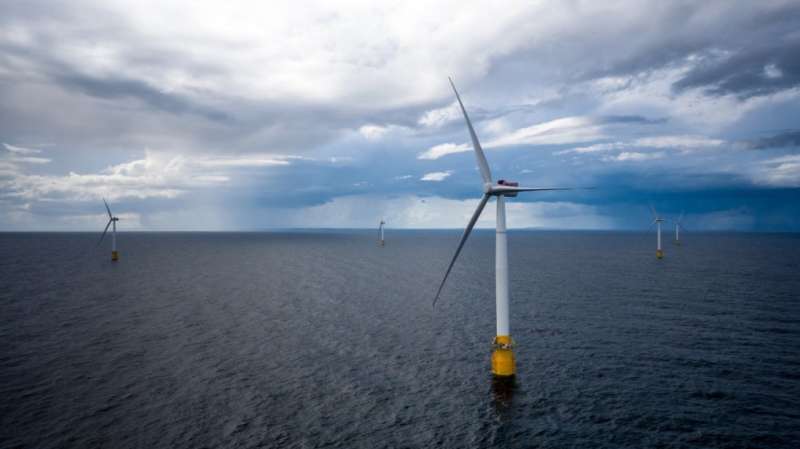October 20, 2017 weblog
Wind turbines off coast of Scotland make waves in renewable energy

What about raising the bar on the potential of offshore wind power?
Growing out a concept and a drawing on a napkin have turned into big floating wind turbines off the coast of Scotland.
They are making news headlines and are giving energy watchers a lot to think about. The turbines were tethered to the seabed about 15 miles from Peterhead in Aberdeenshire, said the BBC.
This is the Hywind Scotland Pilot Park, a park configuration of five 6 MW turbines with a total installed capacity of 30 MW and a transmission voltage of 33 kV.
"The 30 MW Hywind Scotland pilot park will demonstrate the feasibility of future commercial floating wind farms that could be more than four times the size. This will further increase the global market potential for offshore wind energy," Norwegian energy firm Statoil said.
The operation to tow the turbines into place was completed in August. The wind turbines are out at sea and are producing electricity, said reports.
The project is operated by Statoil in partnership with Masdar. Partner Masdar will install Batwind, described in the Statoil announcement as a 1MWh lithium battery storage solution for offshore wind energy.
That the Hywind Scotland pilot park is now delivering electricity to the Scottish grid is not the only point of interest; the Hywind Scotland is also being described as the first floating wind farm, and it will be interesting to study it as such. (The BBC said this marks the world's first floating wind farm—the first time multiple turbines have been installed together as an array, noted The Engineer.)
"The floating approach allows turbines to be installed in much deeper waters than conventional offshore wind farms," said the BBC. "This wind farm is positioned in water depths of up to 129m, whereas those fixed to the seabed are generally at depths of up to 50m."
Then what is so special about a floating wind farm?
The Engineer last year ran an article on floating wind turbines. Helen Knight wrote that "In Europe, over half of the North Sea is considered suitable for floating wind farms, with water depths of between 50m and 220m. The European Wind Energy Association estimates that energy from turbines at depths of over 50m in the North Sea could meet the EU's electricity needs four times over."
The project will generate enough power for about 20,000 homes, said a video caption on the BBC report.
Reader reactions on sites carrying the news ranged from those who anger easily when hearing news of wind energy projects to those who are excited about the possibilities. One reader thought the concept nutty, another regretted that oceans are not left alone and clear, some regretted the initiative as expensive, another worried about the effect on birds while others called the work accomplished as awesome and majestic.
In fact, the Statoil company announcement addressed the issue of cost head-on.
"In recent years, there have been significant cost reductions in both the onshore and bottom fixed offshore wind sectors. Floating wind is expected to follow a similar downward trajectory over the next decade, making it cost competitive with other renewable energy sources."
Tom Delay, CEO, The Carbon Trust, quoted in The Engineer, said it was "crucial that innovation continues to drive down costs and the right policy is in place to increase investment."
More information: www.statoil.com/en/news/worlds … rted-production.html
© 2017 Tech Xplore


















